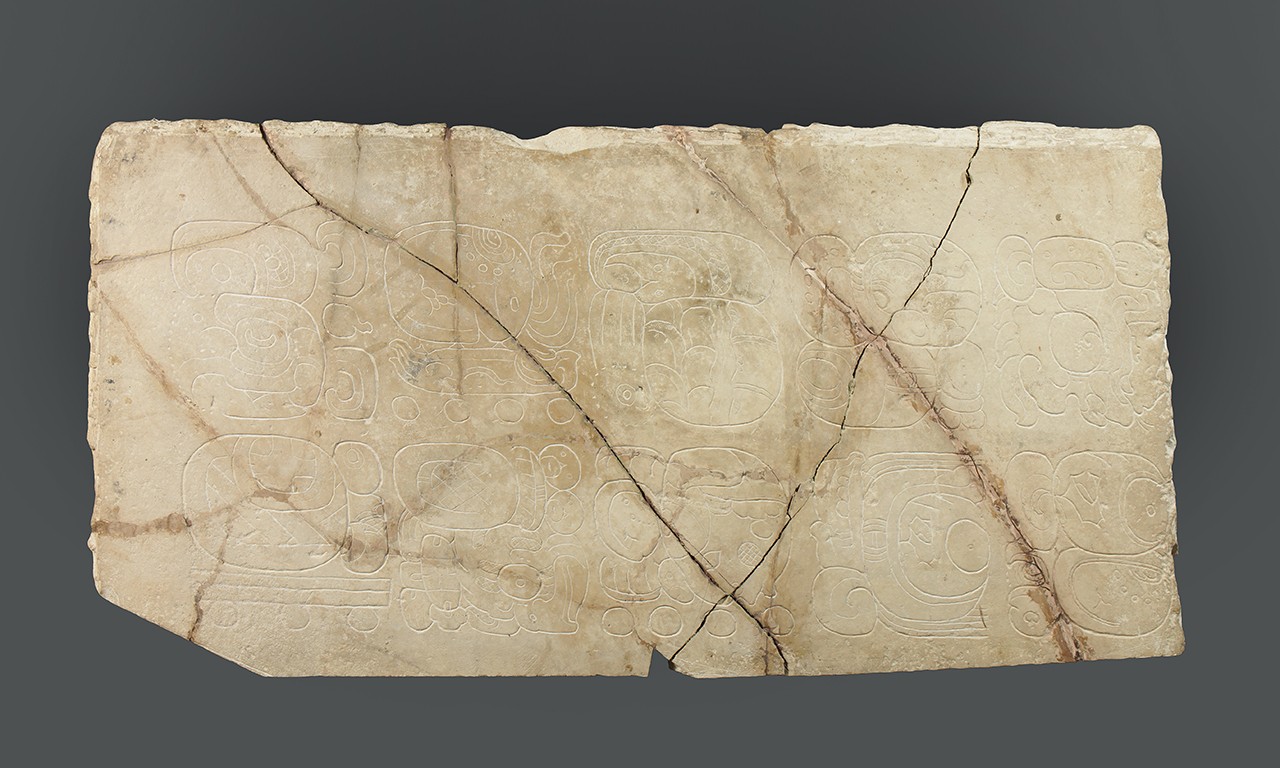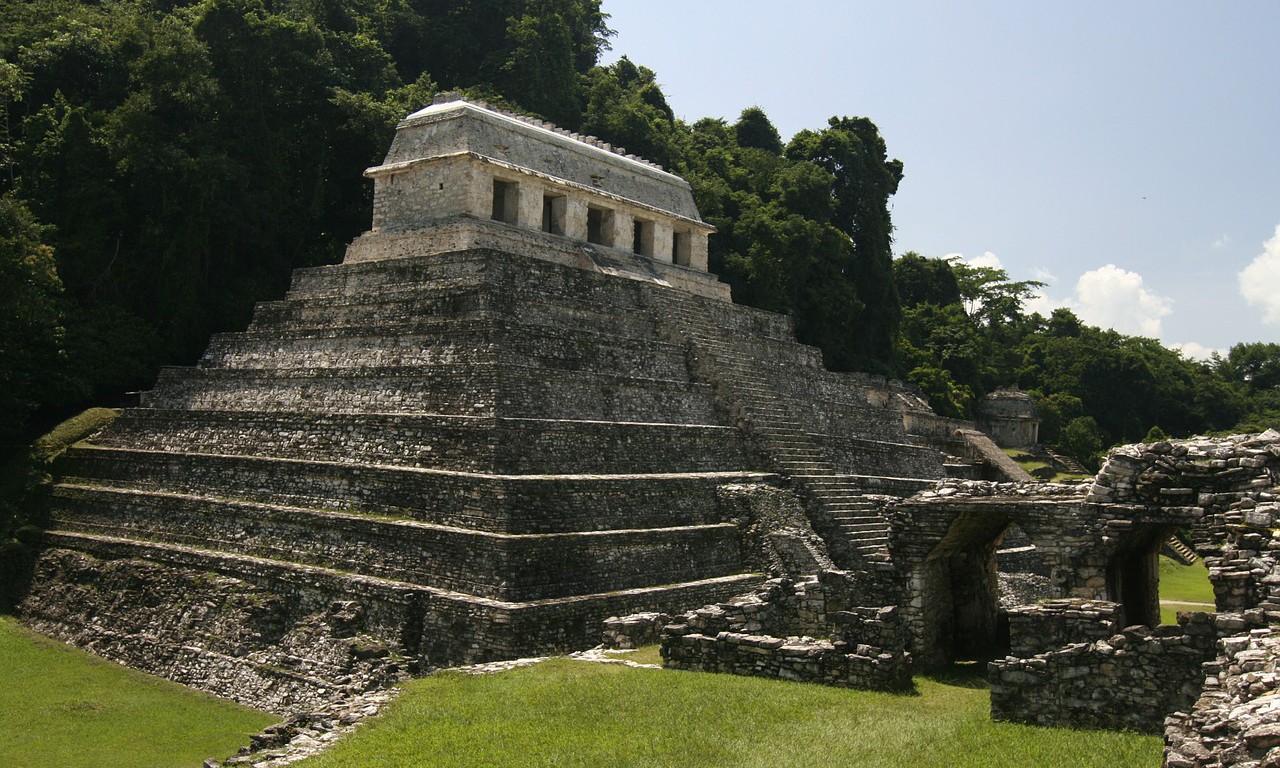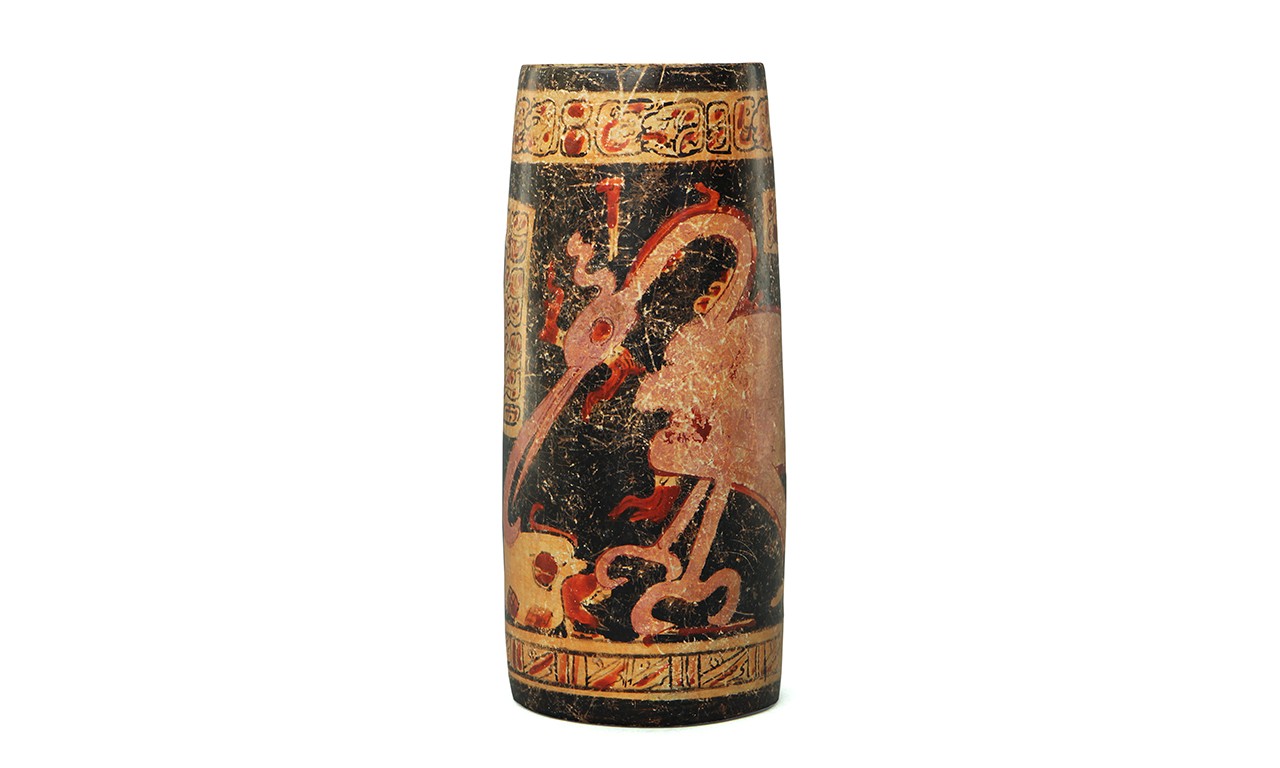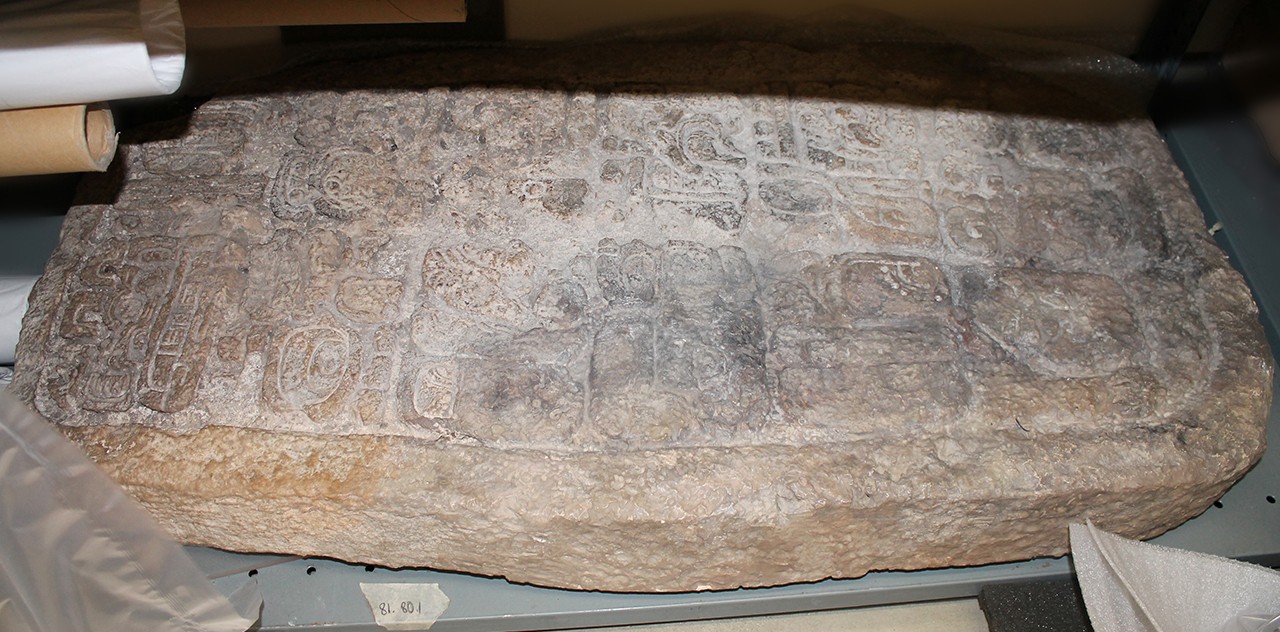 |
Glyph Panel, probably Classic Period (250-900)
Maya culture; Palenque, Chipas, Mexico
Carved limestone; 45 1/2 x 23 in.
2000.40.2
The Dr. Eli B. and Aimee Cohen Memorial Collection |
Block Letters
Even prior to Spanish colonization of the Americas, many of the ancient cities of the Maya had already been long since abandoned in favor of new metropolises. Protected by dense foliage, these early sites kept the history and culture of the Maya alive in the form of ceramics, sculpture, paintings and—key to the subject of this post: large stelae and glyph panels carved with hieroglyphics. Nuanced symbols in high relief, these graphic characters tell of the history and religion of the Maya through both visual and spoken puns. This post looks at the glyphs which appear in some of the Bowers Museum’s Maya objects, including two large glyph stones, and at the larger history and methodology of carving Mayan characters.
 |
| Temple of the Inscriptions, Palenque, Mexico |
Hire a Glyph Maker
Reading and writing within the Mayan context is an interesting subject, and certain aspects of it are still debated. What we do know from signatures appearing on texts is that in Mayan culture there was an elite class of scribes—usually formed from aristocracy and in many cases even the king—who were the only individuals with the ability to write. Both men and women were included in this group, and there was also a chief scribe or ak k’u hun responsible not only for recordkeeping but for many of the important events that might be subject to being recorded such as marriages and ceremonies. Due to the complexity of the hieroglyphics used by the Maya and the variable ways something might be written, it required grueling coursework to be able to learn how to properly express ideas. Most common nouns had logograms; for example, the logogram for jaguar was a disembodied and slightly abstracted jaguar head. However, the same word could also be formed from phonetic hieroglyphics or syllabograms which when read together would sound out the word. The equivalent in English would be if we had characters for syllables rather than individual letters whose combinations can make a variety of sounds. To make it more complex, often time the two types of hieroglyphics (logograms and syllabograms) would be paired in non-standardized ways.
 |
Vessel with Waterbird and Fish, Late Classic Period (700-900)
Maya culture; Yucatan, Mexico
Ceramic and paint; 10 1/2 x 4 1/2 in.
F81.23.1
Bowers Museum Foundation Acquisition Fund Purchase |
Empty Words
It is almost certainly the case that most peasants in Maya society were illiterate, but more so even than that it is highly likely that many of the stone carvers and potters could not read or write. Given the small pool of individuals who could compose hieroglyphics and the amount of time that went into carving the large characters that appear on stellae, evidence indicates that it was scribes who likely drew out outlines of the hieroglyphs in advance. Pottery vessels seem to further confirm that it was the elite class, not artisans who were responsible for almost all writing. Though many vessels use glyphs to identify their subjects, many more such as the above Bowers vessel are decorated with pseudo-glyphs. These are symbols that look visually like Mayan hieroglyphs but do not fall into any of the one thousand plus characters regularly used by the Maya and were not signs the same way standard glyphs are.
Inter-stela King
Script itself could also be written out in a multitude of ways. On stellae, the most common order for characters to be written were in paired columns, where rows are read in pairs from top to bottom before moving onto the next paired column. Hieroglyphs could also be written as single columns or in very rare instances from left to right as is the case in most Western writing. The white limestone glyph panel in this post was originally photographed in a horizontal orientation before it was determined that it was meant to be read vertically as is the case of the most common mode of Mayan writing. Multiple experts have examined this piece to determine its significance. The first to examine the piece could not decipher the text, while the second determined that the inscription refers to the birth of a Maya king in 603 CE—given that the glyph panel originates from the great Mayan city of Palenque—this may indicate it is referring to none other than Pakal the Great, a Mayan lord famous for his bold architectural development of Palenque and his mysterious tomb cover which some say resembles a space ship.
 |
Stela, Late Classic Period (714)
Maya culture; Region of Lake Yatha, El Paeten, Guatemala
Limestone; 45 x 22 in.
81.80.1
Anonymous Gift |
Lost in Erosion
The other of the two large Maya glyph stones in this post is a stela, a freestanding marker carved in high relief. Though this piece has seen a significant amount of wear from the elements, parts of it are still legible, and it appears that it refers to a human sacrifice to the earth taken by either a lord or noble woman on November 15, 714 CE. A lengthier translation of the same glyph published in the Bowers Museum’s Religion, Art, and Iconography: Man and Cosmos in Prehispanic Mesoamerica, shows many of the difficulties experts face in drawing meaning from a long forgotten code of writing.
Text and images may be under copyright. Please contact Collection Department for permission to use. References are available on request. Information subject to change upon further research.





Comments 1
What a fascinating description of Pre-Columbian writing. I wish the Bowers would offer an exhibit using the many Pre-Columbian artifacts they have. The public would enjoy seeing this early civilization that rivals Europe and Asia in art and accomplishment.
I am glad the blog is going to be weekly again. The postings are always well-written, informative and interesting. The blog allows the thousands of objects in storage to be showcased and appreciated. I look forward to the posting each week.